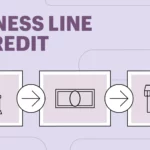Incontinence is a prominent health issue affecting millions of people worldwide, socially, psychologically, and economically. Those with this condition have a challenge in controlling urine and feces, so the two primary incontinence conditions are UI- urinary incontinence, and FI- fecal incontinence.
The condition started mildly just years ago, and people used to manage it with pieces of clothing before introducing adult diapers in the 1800s. As people understand the condition better and its symptoms, the use of pads and diapers has become routine for the patients.
Recently, however, technology has secured a significant place in managing and controlling incontinence as researchers are discovering new ways to efficiently handle the condition.
This article focuses on five ways technology has changed how incontinence is managed and controlled.
1. Introduction of Disposable and Smart Adult Pull-Up Diapers
One of the notable advancements in incontinence care is the development of smart and disposable adult pull-up diapers. Disposable diapers, in particular, are highly absorbent, eco-friendly, discreet, comfortable, and easy to wear, all of which are a plus to the previous diapers. Using them has emerged as an ultimate way for incontinence care, and it’s no wonder they’ve taken the market by storm.
Moreover, introducing smart diapers alongside disposable ones has improved incontinence care even more. Smart diapers are high-tech solutions that provide real-time alerts to caregivers or individuals after detecting moisture. This goes a long way in preventing leaks while ensuring the patients maintain a healthy dryness.
2. Telehealth Care

Ever heard about telehealth or telemedicine? In another health context, not incontinence, perhaps? Simply, telehealth involves connecting with a physician or care provider online in the comfort and safety of your home.
Since the last decade, people have significantly embraced telehealth, and incontinence care seekers haven’t been left behind. Especially because incontinence requires professional assistance, which may not be available at home, telehealth has improved this access and reduced the burden on home caregivers.
Through telehealth, you can talk to your physician over a phone call or video chat, email message, or even remote monitoring where the care provider visits you at your home.
What’s more, telehealth reduces stigmatization associated with incontinence because you aren’t going to move from your home. This keeps you at peace while promoting a more proactive way of managing the condition.
3. Mobile Applications

There has been a rise in mobile applications in the healthcare sector, for incontinence, in particular. Mobile applications facilitate a more accessible and convenient way of tracking and managing incontinence anytime and from anywhere. Typically, mobile applications provide live reminders, monitor fluid intake, and track changing schedules. Through this, the victim can efficiently comply with the necessary guidelines, and there will be low risks of accidents.
Some apps go an extra step to provide educational resources, lifestyle tips, and a supportive community. Therefore, the victim feels empowered and has control over the condition.
4. Wearable Technology
Another technology that has transformed incontinence care is wearable technology. It’s a typical advancement that uses various devices, such as smart belts or undergarments, to get information about hydration, activity levels, and bathroom habits. This helps in the proactive management of the condition because you’ll be aware of every change.
Moreover, such information is necessary for healthcare providers to assess the general wellness of the victim and the severity of the condition at any particular time.
Another thing is that some insurance providers are building incentive programs to ultimately encourage more people with incontinence issues to use wearables for better compensation based on the severity.
Beyond incontinence, wearable technology is useful in monitoring lung function, blood sugar, blood oxygen level, heart rate, etc. So, wearable technology is key for well-rounded health.
5. Data Analytics

The integration of data analytics in healthcare is a major benefit to health seekers, and incontinence patients are no exception. Ideally, it allows for the analysis of your lifestyle, habits, and health history.
Especially because the severity and type of incontinence may differ between people, this provides a better chance for personalized support. Since the integration of data analytics, care solutions have shifted from generic to targeted ones, improving the overall effectiveness of incontinence management.
Conclusion
Incontinence is a manageable condition and shouldn’t worry you. But even so, it’s necessary to adjust to the prevailing care techniques for better results. Technology is ushering in a more effective way of incontinence care. These are great steps because the victims feel less pressured by society’s stigmatization and focus on improving themselves.
The various technologies already in place for incontinence care are the introduction of smart and disposable adult pull-up diapers, telehealth services, mobile applications, wearable technology, and data analytics.
So, if you or someone you know is ailing from incontinence, above are some technologies to consider incorporating into your incontinence care routine.
Author Profile
Latest entries
 BusinessApril 17, 2024Building Your Brand: 5 Strategic Paths To Stand Out In Market
BusinessApril 17, 2024Building Your Brand: 5 Strategic Paths To Stand Out In Market DecorApril 12, 20245 Creative Uses Of Custom Roller Blinds In Your Home
DecorApril 12, 20245 Creative Uses Of Custom Roller Blinds In Your Home BusinessApril 11, 2024Green Branding: 5 Ways Eco-Friendly Business Cards Elevate Your Sustainable Image
BusinessApril 11, 2024Green Branding: 5 Ways Eco-Friendly Business Cards Elevate Your Sustainable Image FinanceApril 10, 20245 Methods To Optimize Your Business Line Of Credit for Success
FinanceApril 10, 20245 Methods To Optimize Your Business Line Of Credit for Success

